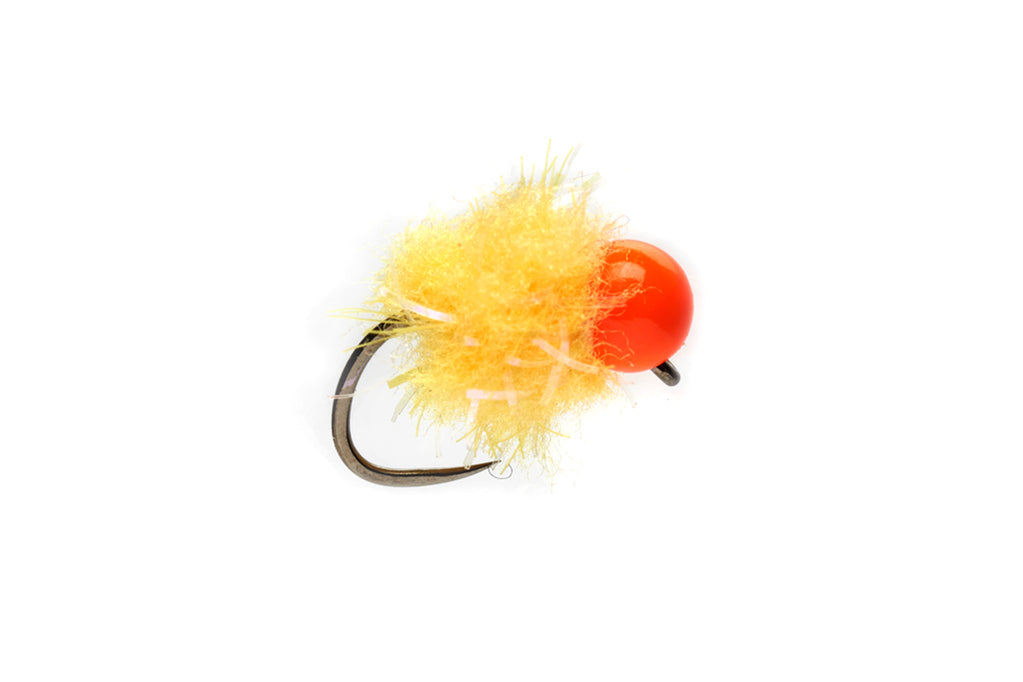
3 Flies for the Week: January 10
We had a little delay getting this one put together. And when I say we, I mean me. But here it is, your 3 flies to get you on some fish this week! We started the week with a good snow storm and now cold temperatures are going to be settling into the area. Don’t let the cold air fool you, fish are still eating. Heck, people catch a ton of fish through the ice so it can’t be any different on the river. I would like to say that fishing this Sunday will not be a good idea. The projected high in the Denver area is supposed to be only 4 degrees, and that’s been dropping on a daily basis. The mountains will be much worse, so I’d avoid anything on Sunday! Aside from that, air temperatures are going to be pretty standard for the winter! Don’t forget, it’s midge season so be prepared to fish tiny flies. Luckily with the decent flows we’ve had lately we can still get away with some bigger lead flies on our nymph rigs. Eggs and stoneflies have been incredibly successful for us lately.
#1: Jig BH Girdle Bug - Coffee/Black sz14 3.3mm

This one might seem a little out of place this time of the year, but with the extra amount of water flowing right now our stoneflies have been getting knocked around a little more than normal. When the stones are out the fish key in on them heavily because they’re a great way to stack up calories in one bite. This is particularly important in the winter when there isn’t much food around. We like the smaller sizes this time of the year to be less obtrusive when fishing the cold, gin-clear water. Additionally, a sz14 does an excellent job of imitating the size of our golden stones present in the Front Range and West Slope waters. The coffee/black coloration does a great job of providing natural contrast that looks much more realistic than the flat colored options. Since this fly is relatively big in comparison to the other flies we’re using right now, you can get away with heavier tippet when fishing this, say 3x. Heavier tippet is required to seat properly on a heavier gauge hook, plus you should fish when you can. Not all the time can we use 3x on our waters. This fly is’t going to be an all day producer, but toss it on when the egg isn’t working.
#2: Twister Egg - Fluo. Sunburst sz20

This week we’re featuring two of our top choices for lead flies on our nymph rigs. There’s only so many midges to talk about and choose from and they all work. But, not all lead flies catch fish, nor do all of them have a great drawing power. Drawing power can mean different things to different people, but what I mean is the fly having the ability to pull fish in to inspect your rig, rather than keep them stationary or spook them. There are quite a few flies that I think have great drawing power in the winter, two of my favorites are small stoneflies and eggs. Eggs have to be presented a lot more naturally in the winter than they would be in the fall and spring. During the fall and spring, water temperatures are warmer and in turn, fish are much more willing to move and eat more bold, unnatural offerings. During the winter though, the water is cold and fish are far less willing to expend energy on flies that don’t seem to be the real deal. With that in mind, I think the twister egg does an amazing job of replicating a natural egg with the addition of tungsten. Throw this in the front of your rig with two midges behind it and expect great results.
#3: Disco Midge - sz22 (Online Only)

The disco midge seems to be a fly that has fallen by the wayside through the years and I don't understand why. This fly doubles well as a larva and a pupa. It has a super realistic profile and coloration, with the addition of flash ribbing to get those picky winter trout to turn their head. I really like fishing the smaller sz22 in this fly because it allows me to fish it as my second or third fly behind an egg or stonefly. The bigger sizes do a much better job of resembling a midge larva and are really only good to be fished as your first or second fly. I look for versatility this time of the year so I can keep my box small, and the sz22 does just that. Red is a very important color for midge patterns as it's the most common color of the larvae. Pupa generally aren’t red, but fishing a red pupa isn’t a bad idea as everyone and their mother is fishing a black or brown midge. During the winter, I find it’s best to try and fish something different than everyone else. I really like fishing reds, oranges, purples, and blues to differentiate my pupae patterns from the masses. Give it a go next time you’re out there, it’s definitely a little unorthodox, but with the modern crowds I’d say that’s a good thing.
Best of luck on the water this week and we hope these flies catch a fish or two for ya. All 3 of the flies are available on our website and 2 are in the shop. If you have any questions or concerns, feel free to reach out to Xavier on email at xavier@goldenflyshop.com, or call the shop at 303-330-1292. Thank you!




Comments
Leave a comment